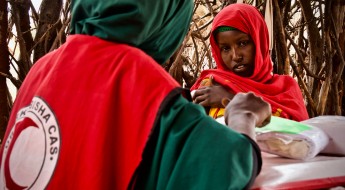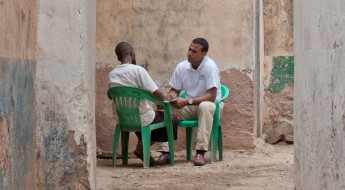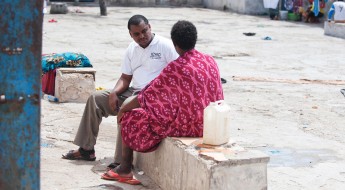Somalia: How to care for the dead in the aftermath of disaster
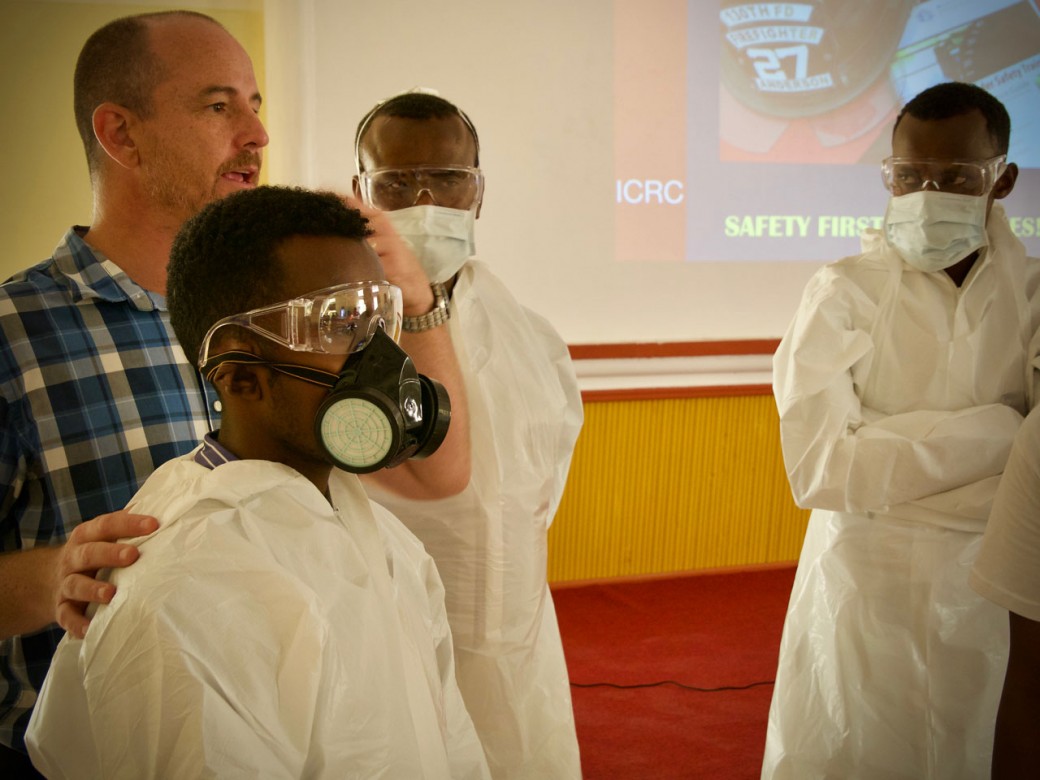 Safety first! An ICRC forensic expert, Stephen Fosenca, explains the risks first responders face when rushing to help. The participants also shared their experiences, including responding to the bomb blast last October. Misconceptions, such as “dead bodies spread disease,” were also challenged.CC BY-NC-ND / ICRC / Abdikarim Mohamed
Safety first! An ICRC forensic expert, Stephen Fosenca, explains the risks first responders face when rushing to help. The participants also shared their experiences, including responding to the bomb blast last October. Misconceptions, such as “dead bodies spread disease,” were also challenged.CC BY-NC-ND / ICRC / Abdikarim Mohamed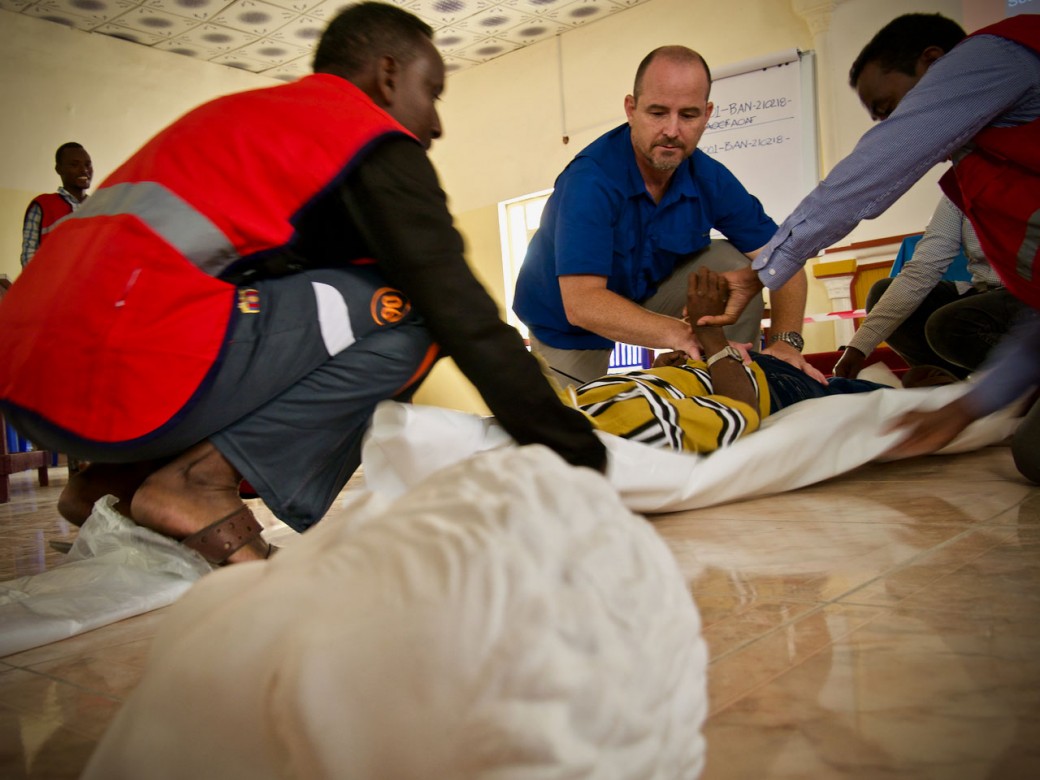 The dead should be placed in a body bag in the place of recovery. In most cases, two people are needed to move an adult in a body bag. To avoid injuring themselves, participants were encouraged to roll bodies into the bags, rather than lift them in.CC BY-NC-ND / ICRC / Abdikarim Mohamed
The dead should be placed in a body bag in the place of recovery. In most cases, two people are needed to move an adult in a body bag. To avoid injuring themselves, participants were encouraged to roll bodies into the bags, rather than lift them in.CC BY-NC-ND / ICRC / Abdikarim Mohamed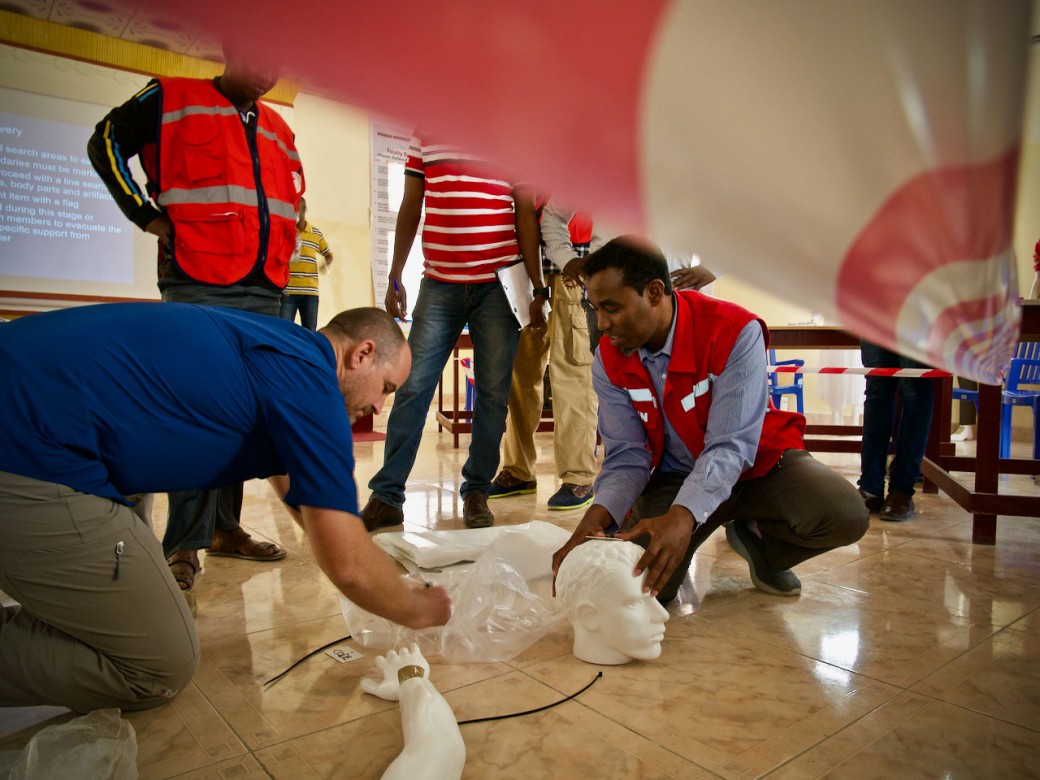 Stephen Fonseca and Dr Abdulkadir Adan, founder of Aamin Ambulance, show trainees how to create a tagging system for bodies so that information can be easily retrieved and families can identify their loved ones.CC BY-NC-ND / ICRC / Abdikarim Mohamed
Stephen Fonseca and Dr Abdulkadir Adan, founder of Aamin Ambulance, show trainees how to create a tagging system for bodies so that information can be easily retrieved and families can identify their loved ones.CC BY-NC-ND / ICRC / Abdikarim Mohamed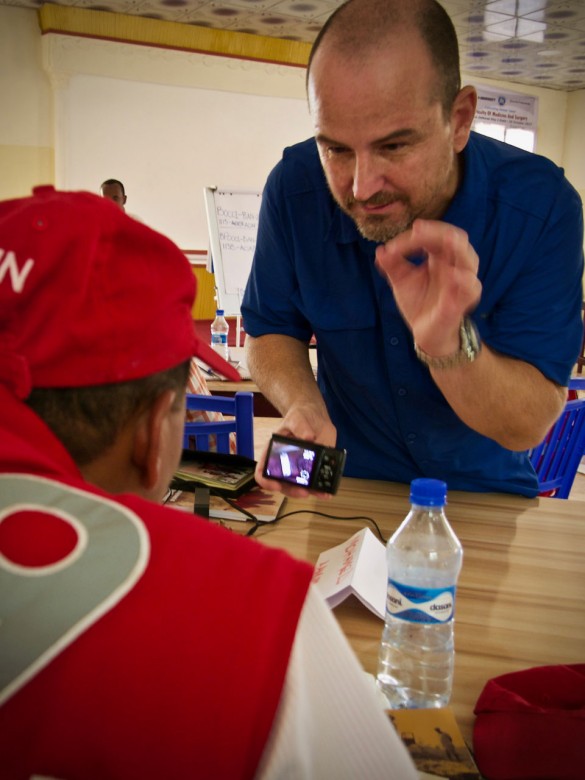 Why photograph the body? It may take days or even weeks for forensic experts to be mobilized and therefore it is the first responders who are best able to capture information using photographs – an opportunity that is lost as bodies decompose.CC BY-NC-ND / ICRC / Abdikarim Mohamed
Why photograph the body? It may take days or even weeks for forensic experts to be mobilized and therefore it is the first responders who are best able to capture information using photographs – an opportunity that is lost as bodies decompose.CC BY-NC-ND / ICRC / Abdikarim Mohamed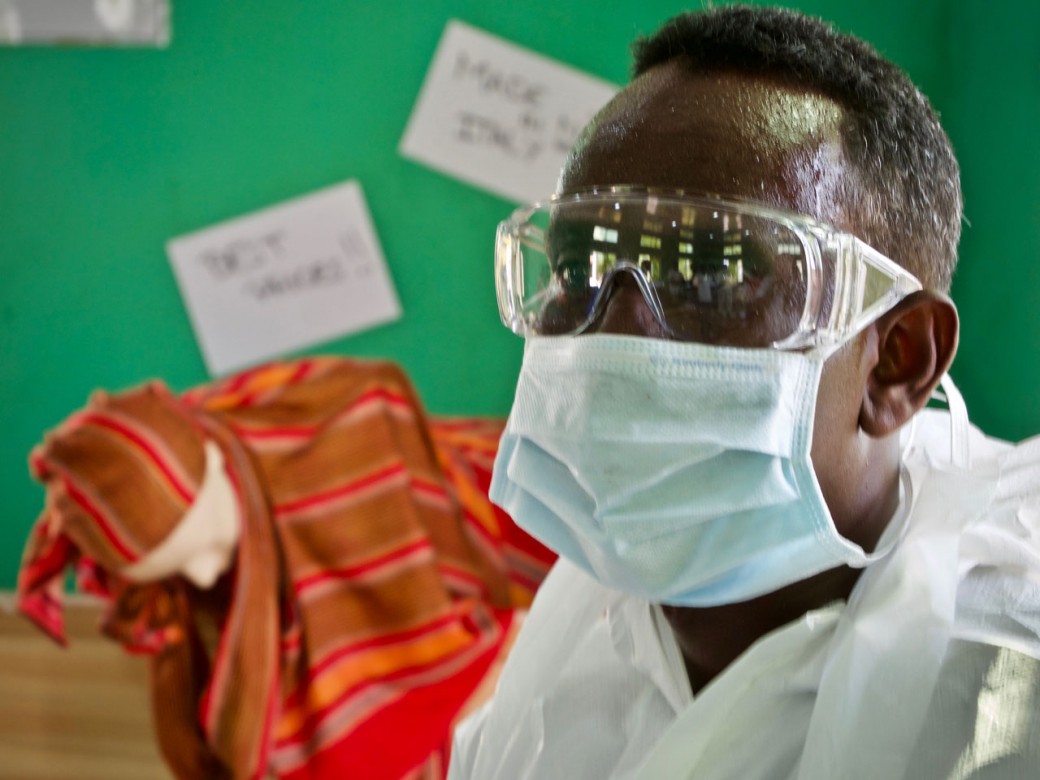 The suits worn for protection are made of high-density polyethylene which creates a non-woven, waterproof material. They can get very hot and participants were urged to hydrate every 30 minutes, more so in Somalia’s hot, dry climate.CC BY-NC-ND / ICRC / Abdikarim Mohamed
The suits worn for protection are made of high-density polyethylene which creates a non-woven, waterproof material. They can get very hot and participants were urged to hydrate every 30 minutes, more so in Somalia’s hot, dry climate.CC BY-NC-ND / ICRC / Abdikarim Mohamed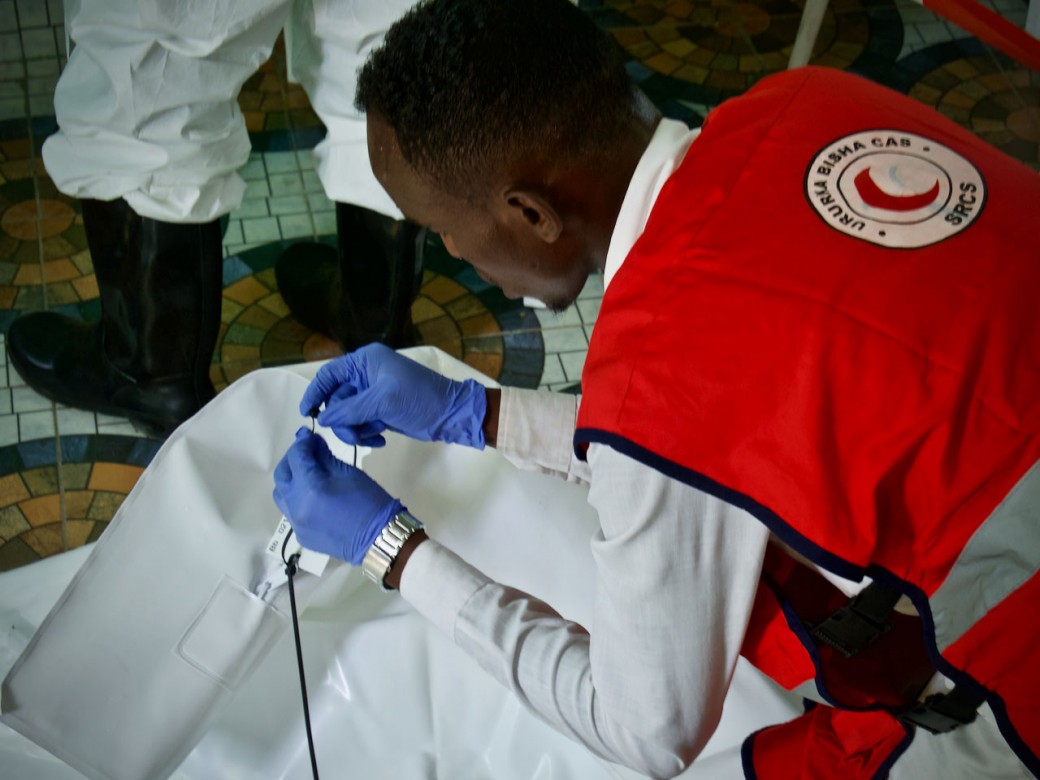 The Somali Red Crescent Society (SRCS) has emergency action teams trained on first aid, triage for the injured and evacuating the casualties. The SRCS and the ICRC also work to restore family links and ensuring families know the fate of their loved ones.CC BY-NC-ND / ICRC / Abdikarim Mohamed
The Somali Red Crescent Society (SRCS) has emergency action teams trained on first aid, triage for the injured and evacuating the casualties. The SRCS and the ICRC also work to restore family links and ensuring families know the fate of their loved ones.CC BY-NC-ND / ICRC / Abdikarim Mohamed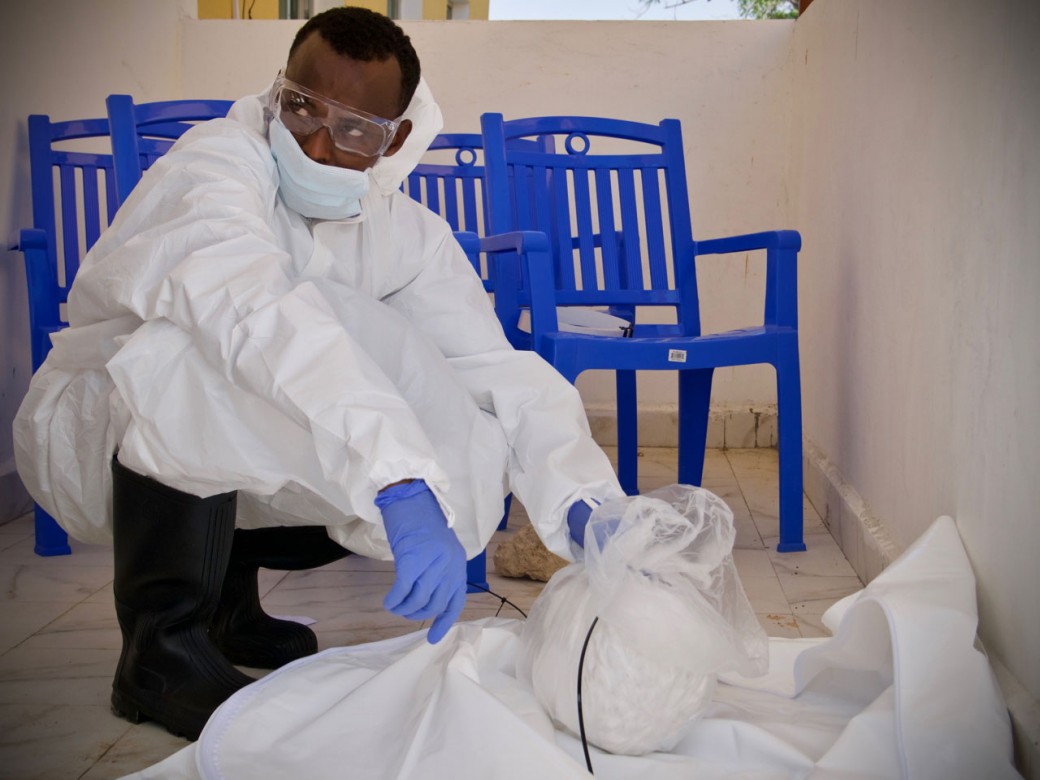 Support for families and relatives is very important in the management of dead bodies. First responders present at the workshop were told to consider the bereaved at all times when handling the bodies and respecting them throughout the process.CC BY-NC-ND / ICRC / Abdikarim Mohamed
Support for families and relatives is very important in the management of dead bodies. First responders present at the workshop were told to consider the bereaved at all times when handling the bodies and respecting them throughout the process.CC BY-NC-ND / ICRC / Abdikarim Mohamed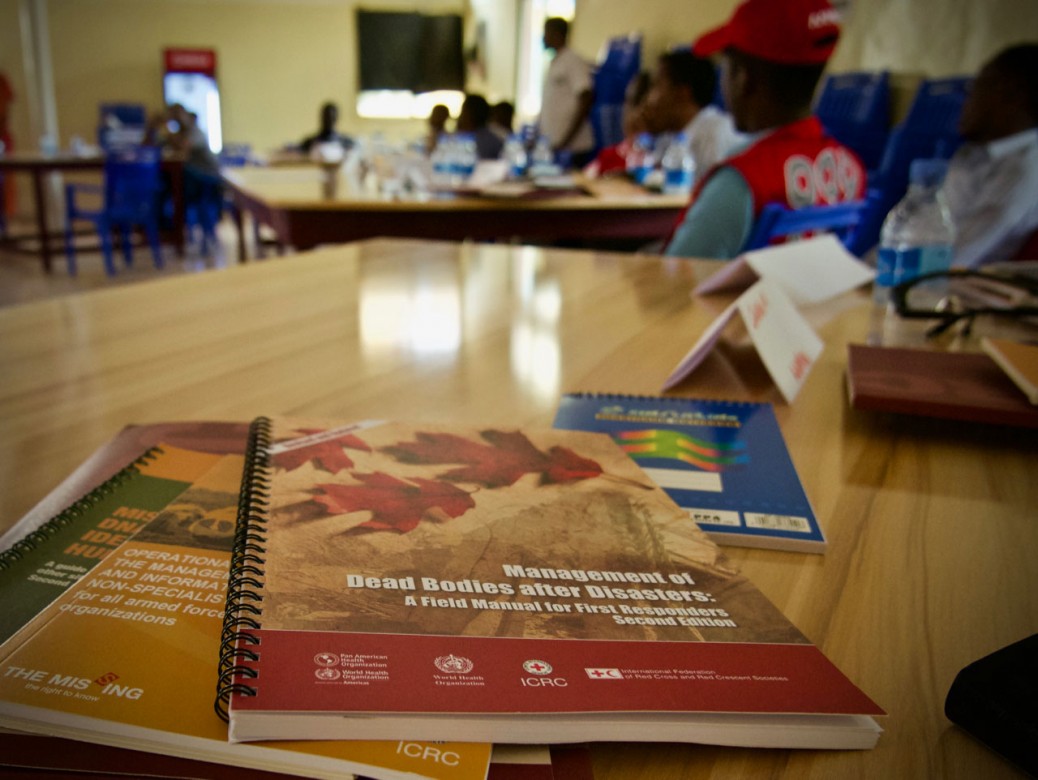 Each participant received a best practices-handbook and a field manual for first responders.CC BY-NC-ND / ICRC / Abdikarim Mohamed
Each participant received a best practices-handbook and a field manual for first responders.CC BY-NC-ND / ICRC / Abdikarim Mohamed
How much of a body do you need to consider it a human? A tooth? A finger? These are some of the questions participants attending a dead body management this week in Mogadishu had to think about.
The training, the first ever to take place in Somalia, brought together 30 representatives from the Somali Red Crescent Society, Aamin ambulance, medical staff from Madina and Keysaney hospitals, and other first responders to learn best practices for handling human remains. Proper and dignified management of the dead in conflicts and disasters is a key component of the ICRC's work in Somalia. How corpses are dealt with can have a profound impact and long-lasting effect on the mental health of survivors and the community.
These photos show what went on during the three-day workshop that took place in Madina hospital.

